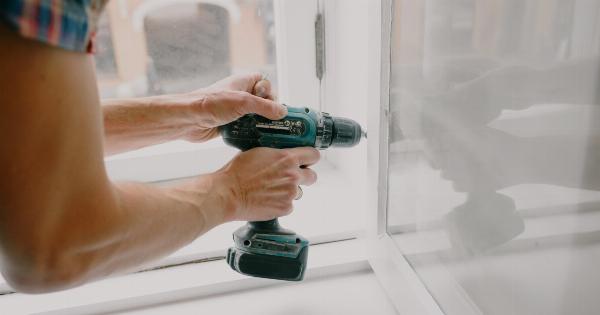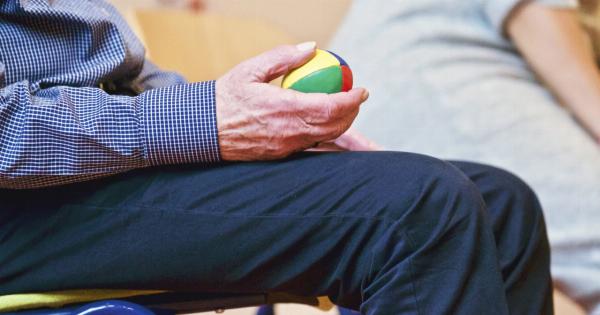Urine incontinence is a common problem that affects women of all ages. It can have a significant impact on their health and daily life, affecting their physical, emotional, and social well-being.
In this article, we will explore how urine incontinence affects women’s health and daily life, and discuss potential management strategies to alleviate the burden of this condition.
Types of Urine Incontinence
There are several types of urine incontinence that women may experience:.
- Stress incontinence: This occurs when physical activities such as coughing, sneezing, or exercising put pressure on the bladder and cause urine leakage. It is often a result of weak pelvic floor muscles.
- Urge incontinence: Also known as overactive bladder, this type of incontinence is characterized by a sudden and intense urge to urinate, followed by involuntary bladder contractions and leakage.
- Overflow incontinence: This occurs when the bladder does not empty completely, leading to frequent or constant leakage of small amounts of urine.
- Functional incontinence: This type is often seen in women with physical or cognitive impairments that make it difficult for them to reach the toilet in time.
Physical and Emotional Impact
Urine incontinence can have a profound impact on women’s physical and emotional well-being:.
Physical Impact
1. Skin irritation and infections: Constant exposure to urine can lead to skin irritation and increase the risk of urinary tract infections.
2. Sleep disturbances: Women with urine incontinence often experience disrupted sleep due to frequent trips to the bathroom or nocturnal enuresis.
3. Sexual dysfunction: Incontinence can negatively affect a woman’s sexual intimacy and satisfaction, leading to decreased quality of life.
4. Activity limitations: Fear of leakage can restrict a woman’s participation in physical activities, sports, and exercise, potentially leading to a sedentary lifestyle.
Emotional Impact
1. Embarrassment and shame: Women with urine incontinence may experience embarrassment, shame, and a loss of self-esteem, particularly when leakage occurs in public settings.
2. Anxiety and depression: The constant worry of leakage and the impact it may have on social interactions can contribute to anxiety and depression in affected women.
3. Social isolation: Women with urine incontinence often withdraw from social activities and may avoid intimate relationships or social gatherings due to fear of embarrassment or leakage.
Impact on Daily Life
Urine incontinence can significantly disrupt a woman’s daily life:.
1. Personal hygiene:
Managing urine incontinence requires frequent changes of absorbent pads or underwear, and meticulous cleaning of the genital area to prevent skin breakdown and infections.
2. Clothing choices:
Women with incontinence may need to carefully select clothing to minimize the visibility of leakage, such as wearing dark colors or loose-fitting garments.
3. Planning toilet access:
Many women with incontinence have to constantly plan their daily activities around the availability of toilets. This may involve avoiding certain events or locations where toilets are not easily accessible.
4. Financial implications:
The cost of purchasing absorbent pads, protective garments, or other incontinence management products can be significant, resulting in financial strain for some women.
5. Impact on career:
Women with urine incontinence may face challenges in their professional lives, such as limited job opportunities or decreased productivity due to the need for frequent bathroom breaks.
Management Strategies
While urine incontinence can significantly impact women’s health and daily life, there are various management strategies that can help mitigate the effects:.
Lifestyle Modifications
– Pelvic floor exercises (Kegels) to strengthen the muscles that support the bladder.
– Weight management, as obesity can worsen incontinence symptoms.
– Avoiding bladder irritants such as caffeine, alcohol, and spicy foods.
Behavioral Techniques
– Bladder training to gradually increase the time between bathroom visits.
– Scheduled toileting to empty the bladder at regular intervals, reducing the risk of urgency and leakage.
– Fluid management to maintain adequate hydration without overloading the bladder.
Medical Interventions
– Medications that relax the bladder muscles or reduce bladder contractions.
– Topical estrogen therapy for postmenopausal women to improve tissue tone and function.
– Nerve stimulation techniques such as sacral neuromodulation or percutaneous tibial nerve stimulation.
– Surgical interventions for severe cases of incontinence that don’t respond to conservative treatments.
Conclusion
Urine incontinence is a prevalent condition that significantly affects the health and daily life of women. It can lead to physical discomfort, emotional distress, and limitations in various aspects of life.
However, with appropriate management strategies, women can regain control over their bladder function and improve their overall well-being.





























